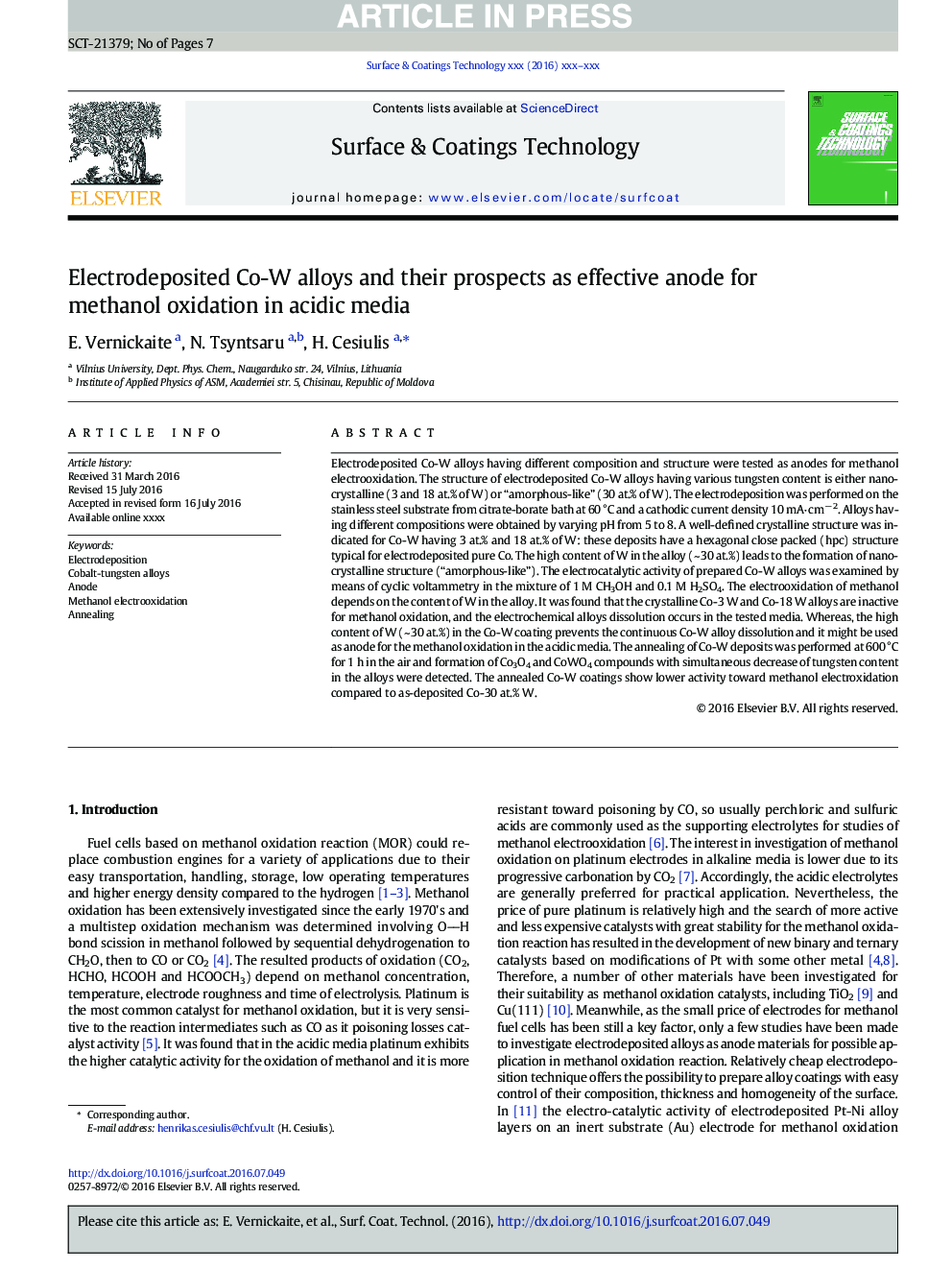| Article ID | Journal | Published Year | Pages | File Type |
|---|---|---|---|---|
| 5465700 | Surface and Coatings Technology | 2016 | 7 Pages |
Abstract
Electrodeposited Co-W alloys having different composition and structure were tested as anodes for methanol electrooxidation. The structure of electrodeposited Co-W alloys having various tungsten content is either nanocrystalline (3 and 18 at.% of W) or “amorphous-like” (30 at.% of W). The electrodeposition was performed on the stainless steel substrate from citrate-borate bath at 60 °C and a cathodic current density 10 mA â cmâ 2. Alloys having different compositions were obtained by varying pH from 5 to 8. A well-defined crystalline structure was indicated for Co-W having 3 at.% and 18 at.% of W: these deposits have a hexagonal close packed (hpc) structure typical for electrodeposited pure Co. The high content of W in the alloy (~ 30 at.%) leads to the formation of nanocrystalline structure (“amorphous-like”). The electrocatalytic activity of prepared Co-W alloys was examined by means of cyclic voltammetry in the mixture of 1 M CH3OH and 0.1 M H2SO4. The electrooxidation of methanol depends on the content of W in the alloy. It was found that the crystalline Co-3 W and Co-18 W alloys are inactive for methanol oxidation, and the electrochemical alloys dissolution occurs in the tested media. Whereas, the high content of W (~ 30 at.%) in the Co-W coating prevents the continuous Co-W alloy dissolution and it might be used as anode for the methanol oxidation in the acidic media. The annealing of Co-W deposits was performed at 600 °C for 1 h in the air and formation of Co3O4 and CoWO4 compounds with simultaneous decrease of tungsten content in the alloys were detected. The annealed Co-W coatings show lower activity toward methanol electroxidation compared to as-deposited Co-30 at.% W.
Related Topics
Physical Sciences and Engineering
Materials Science
Nanotechnology
Authors
E. Vernickaite, N. Tsyntsaru, H. Cesiulis,
